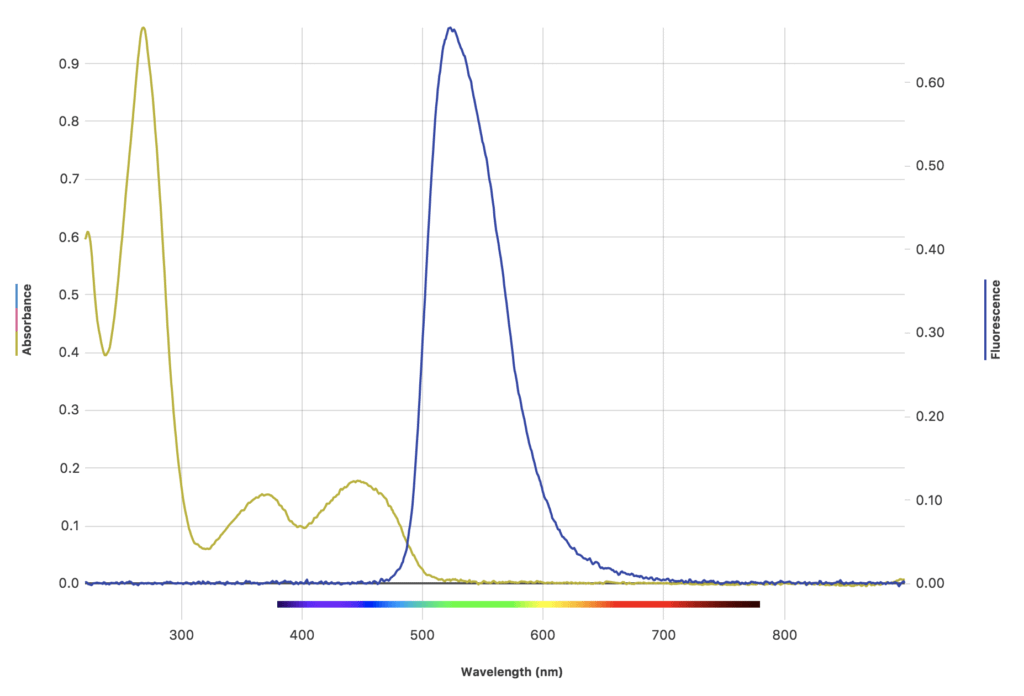Vitamin B2, also known as riboflavin, was first isolated in 1933. It is an essential nutrient for humans as the precursor of the coenzymes flavin mononucleotide (FMN) and flavin adenine dinucleotide (FAD). FAD plays a key role in several important enzymatic reactions in metabolism, including the Krebs cycle. Riboflavin also happens to be a relatively stable, strongly fluorescing compound that makes it ideal for investigations using a fluorescence spectrophotometer, such as the Go Direct® SpectroVis® Plus Spectrophotometer or the Vernier Fluorescence/UV-VIS Spectrophotometer.

Our chemistry team recently posted a free experiment to our website, “Absorbance and Fluorescence Characterization of Vitamin B2.” In the experiment, students explore the properties of riboflavin using a spectrometer and our free, recently updated Vernier Spectral Analysis®. Spectral Analysis v4.8, released in February 2019, now includes fluorescence support. You still get the user-friendly interface that walks students through the data-collection process to easily set up a full spectrum experiment, Beer’s Law experiment, kinetics experiment, or emissions; but now you will have these options for fluorescence data as well. In addition, we’ve added an Advanced Full Spectrum mode that allows you to compare multiple experiment types (absorbance, percent transmittance, fluorescence, and emissions) within the same file. Examples for using this option include inquiry-based analysis of an unknown sample, investigating the relationship between absorbance and % transmittance, and investigating the Stokes shift of a sample using absorbance and fluorescence spectra.
Download “Absorbance and Fluorescence Characterization of Vitamin B2” Experiment.
